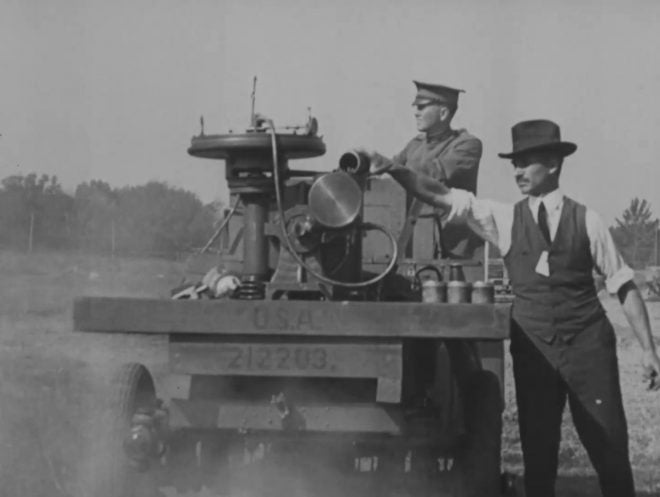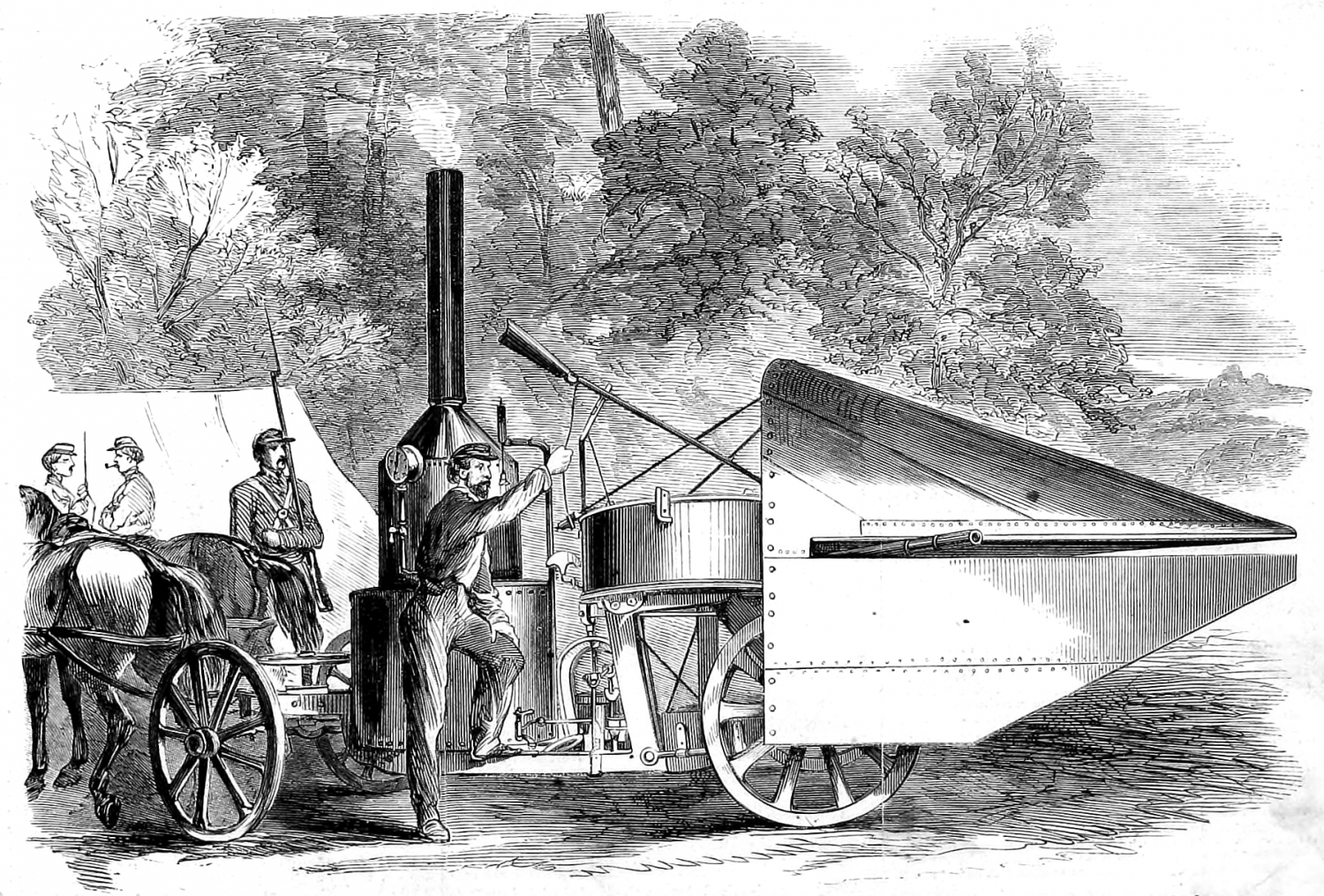What the hell is a centrifugal machine gun? In the plainest of terms, it’s a gun that requires no propellant powder and a system which has sparked the imaginations of inventors and gun designers for over 200 years.
A couple of months ago I was browsing through the US National Archives’ online catalogue, as you do, and I came across a phenomenal piece of footage from the 1920s. It showed a man feeding what appeared to be ball bearings into an odd-looking contraption on the back of a truck. Now, I’d heard about centrifugal guns in the past but I’d never imagined I’d see contemporary archival footage of one in action. The short clip was followed by another short sequence showing the effect the odd contraption’s spherical projectiles had had on some large wooden board targets downrange.
This footage piqued my interest, why wasn’t this technology better known, who was the man loading the contraption and how did it work? I began researching centrifugal gun designs and after a good few hours spent trawling through patents I traced the idea back to an initial explosion of enthusiasm in the 1850s when a series of designs were patented in the US. The most famous of these was the Winans Steam Gun – actually designed by Charles S. Dickinson.
These early guns were hand-cranked or steam-powered and while the designs were intriguing they never appear to have gained much traction. The principle of centrifugal force – an inertial force which appears to act on objects moving in a circule – directs them away from the axis of rotation. As a result, a centrifugal machine gun required no propellant powder to propel the projectile or a rifled barrel to stabilise the projectile. Once released from the axis of rotation the projectile travels on a linear trajectory until it expends all of its energy. It basically works along the same principle as a primitive sling. After the US Civil War, the centrifugal gun concepts then lay dormant for many years until the outbreak of World War One.
Between 1916 and 1926 nearly 100 centrifugal gun-related patents were filed and granted. The explosion of interest in the concept was spurred by the war and the desire to develop weapons capable of winning it. Here’s just a couple of the patents filed during that period:
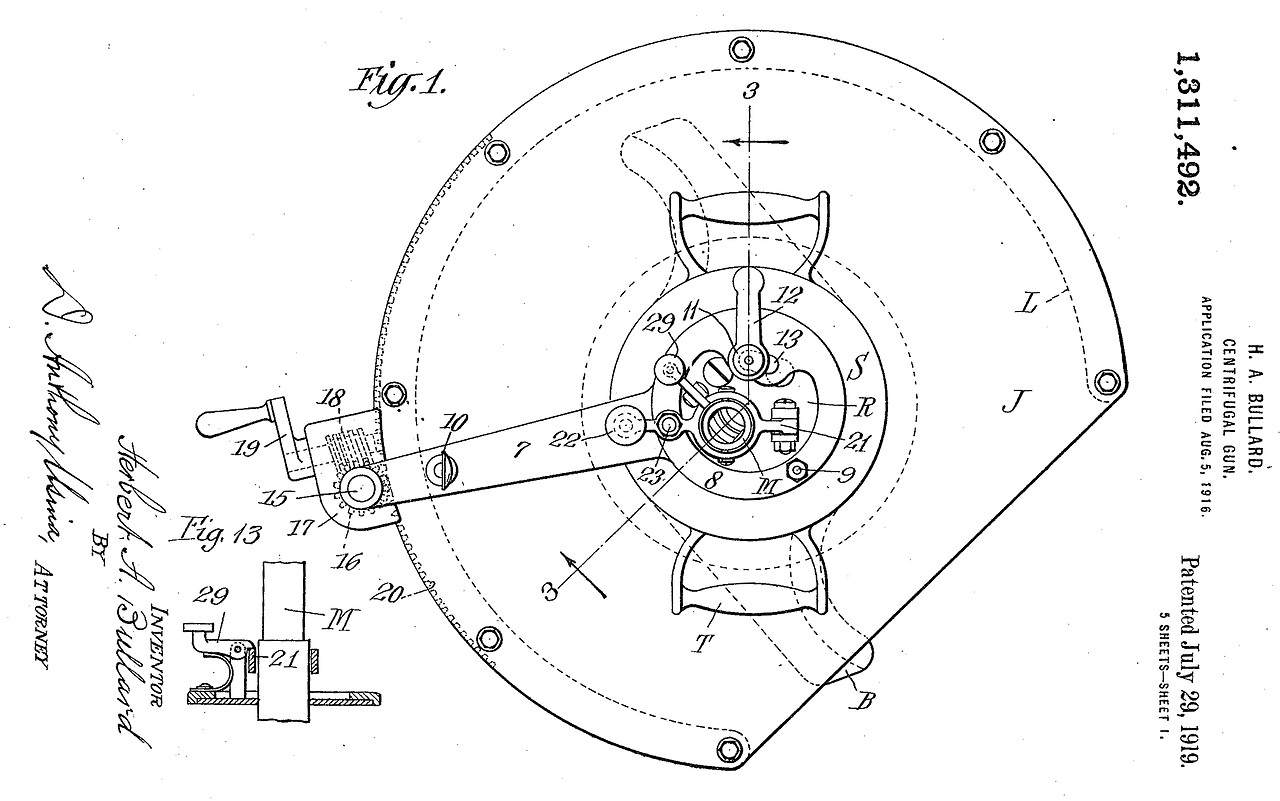
Bullard’s 1919 gun (US Patent Office)
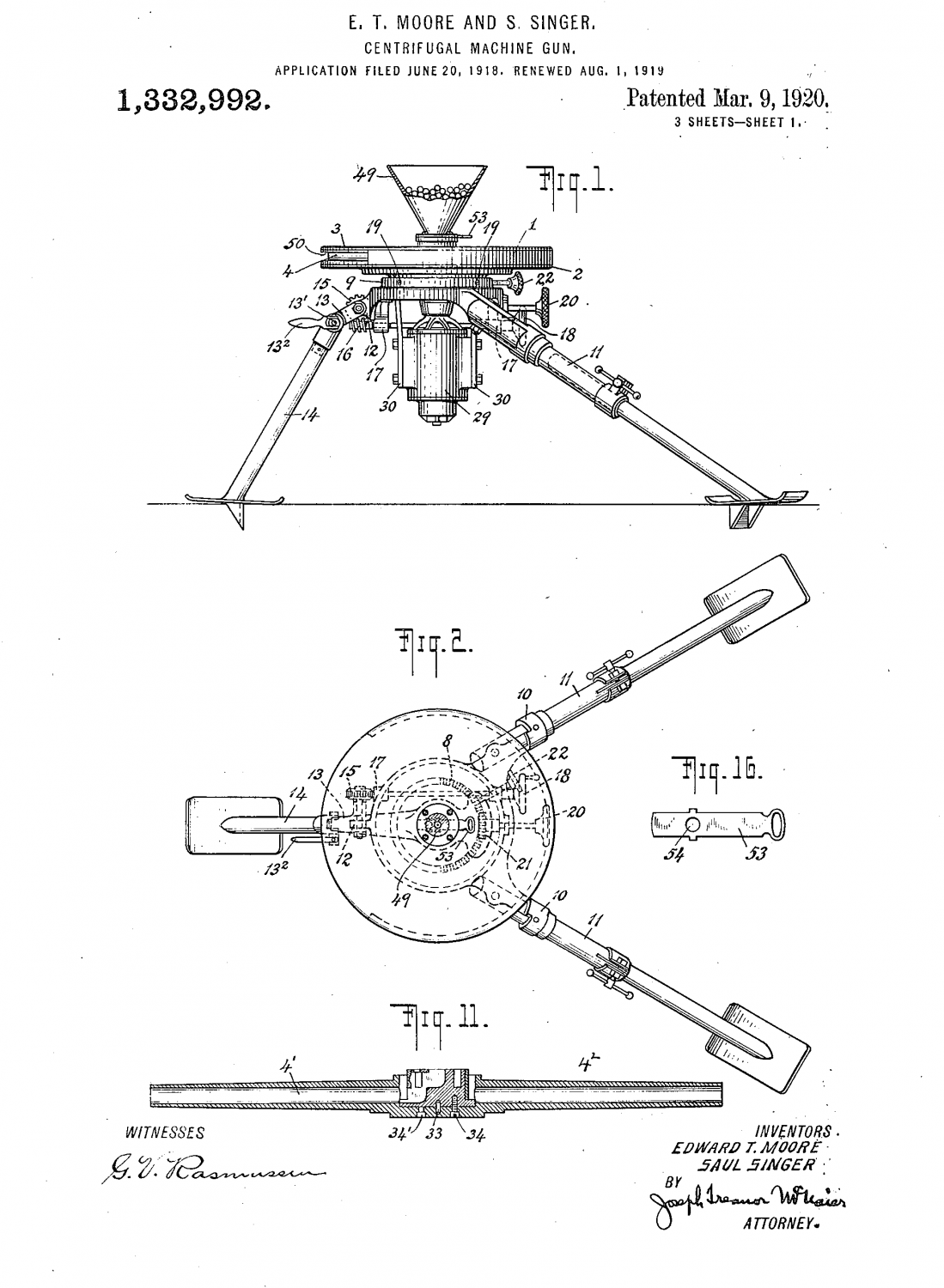
Moore’s 1920 patent (US Patent Office)

McNaier’s patent showing a gun in an armoured car (US Patent Office)
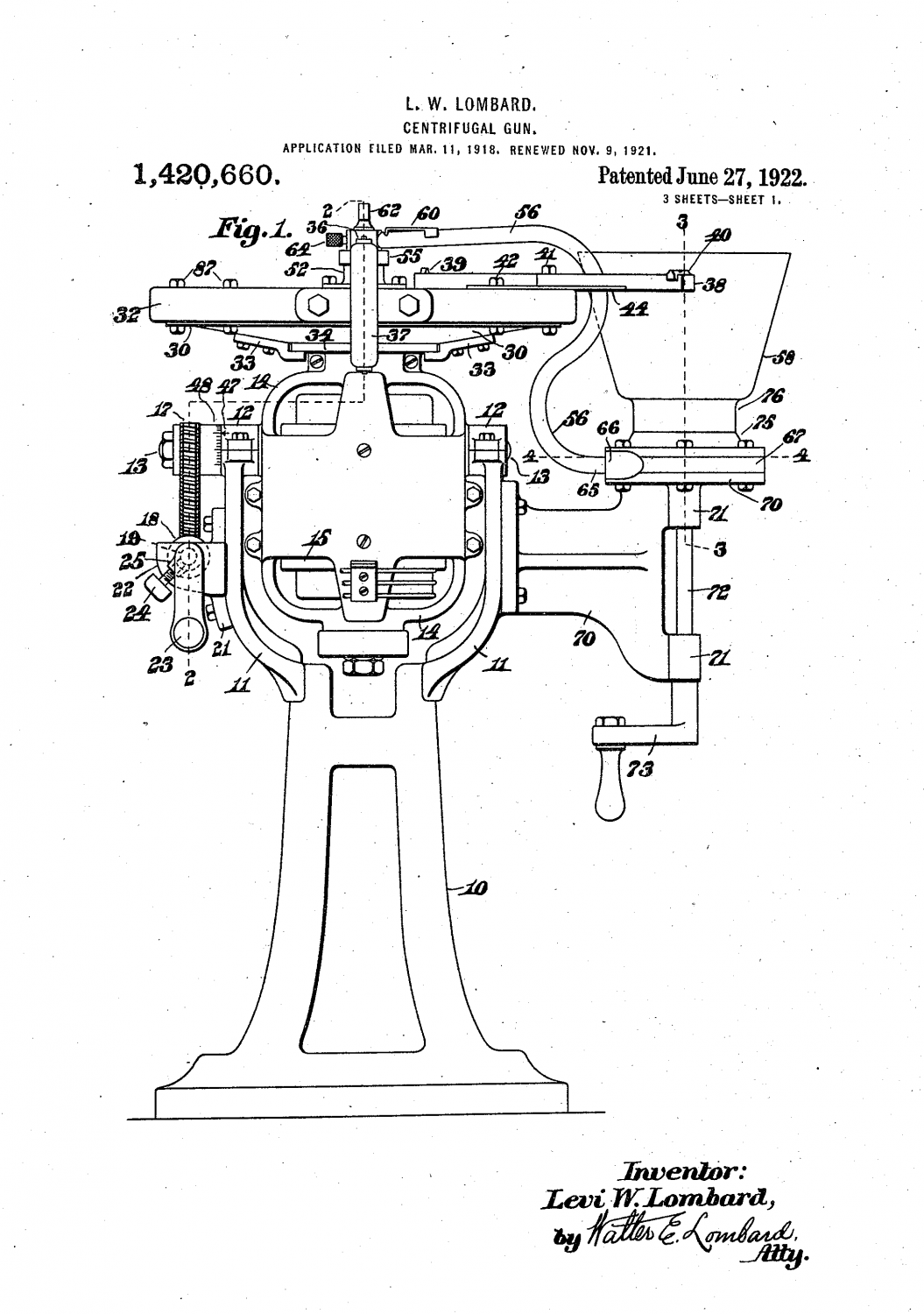
Lombard’s 1922 design (US Patent Office)
In June 1918, Major Edward T. Moore and Saul Singer filed a patent for a centrifugal machine gun powered by an electrical motor (US #1,332,992). The motor spooled up the centrifugal barrel assembly to rotate extremely quickly and impart a centrifugal force on projectiles. According to Julian Hatcher, the gun could fire steel ball bearing projectiles at approximately 1,200 feet per second. Fire was controlled by a stop pin in the ammunition feed tube. Moore claimed the weapon could fire a projectile 1.5 miles with enough force to kill a man. He also suggested the weapon’s rate of fire approached 2,000 rounds per minute. It appears that Moore’s gun may have been tested in 1918, but Hatcher described its accuracy as ‘extremely poor’.
Here’s the video I put together looking at the early history of centrifugal guns:
The gun seen in the footage is quite possibly Moore’s or potentially Victor Czegka’s, despite considerable research I’ve been unable to confirm just who designed the centrifugal technical seen in the footage. What we do know, however, is that the footage was filmed during the Second Annual Meeting of the US Army Ordnance Association, in October 1920. An article in the US Army Ordnance Journal dating from May 1921, notes that the testing/demonstration took place at Aberdeen Proving Ground, with the gun firing at 16,000 revolutions per minute which required 98 horsepower from the engine powering it.
Despite various designs seeing some US military testing none were ever adopted and relatively little information on them is available. There are very few photos of centrifugal machine guns so stumbling across actual footage of one gun actually operating is very exciting.
They were relatively cumbersome weapons with extremely varying accuracy but this footage at least proves the concept worked. A short report in a May 1921 edition of Scientific American sheds some light, stating an unnamed gun was rejected “because of its great weight and its inability to obtain high initial velocity” concluding that “no centrifugal gun can have military value”. It also appears that the range of the centrifugal guns was limited to the speed of their revolution, which in turn was limited by the power of the engine and motor that powered them. The larger the motor, the more cumbersome the weapon system was. Despite this centrifugal machine guns are a fascinating tangent to the history of the machine gun – one that occasionally still garners interest today with the system still occasionally being revived, such as the DREAD system.
For more detail on the early history of centrifugal guns, check out my full article here.
 Your Privacy Choices
Your Privacy Choices
